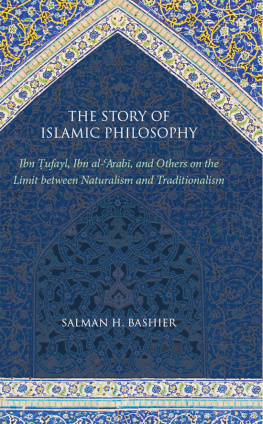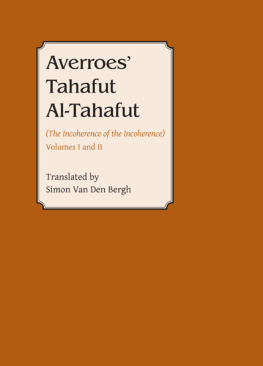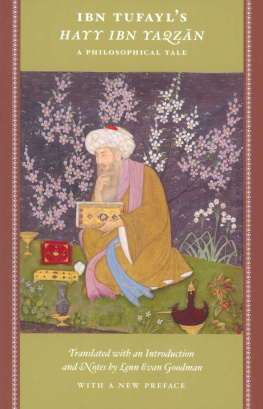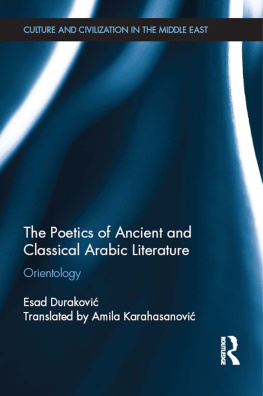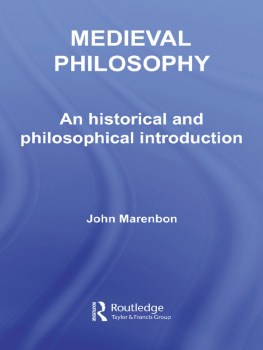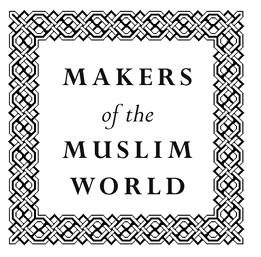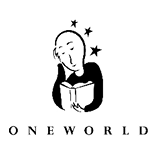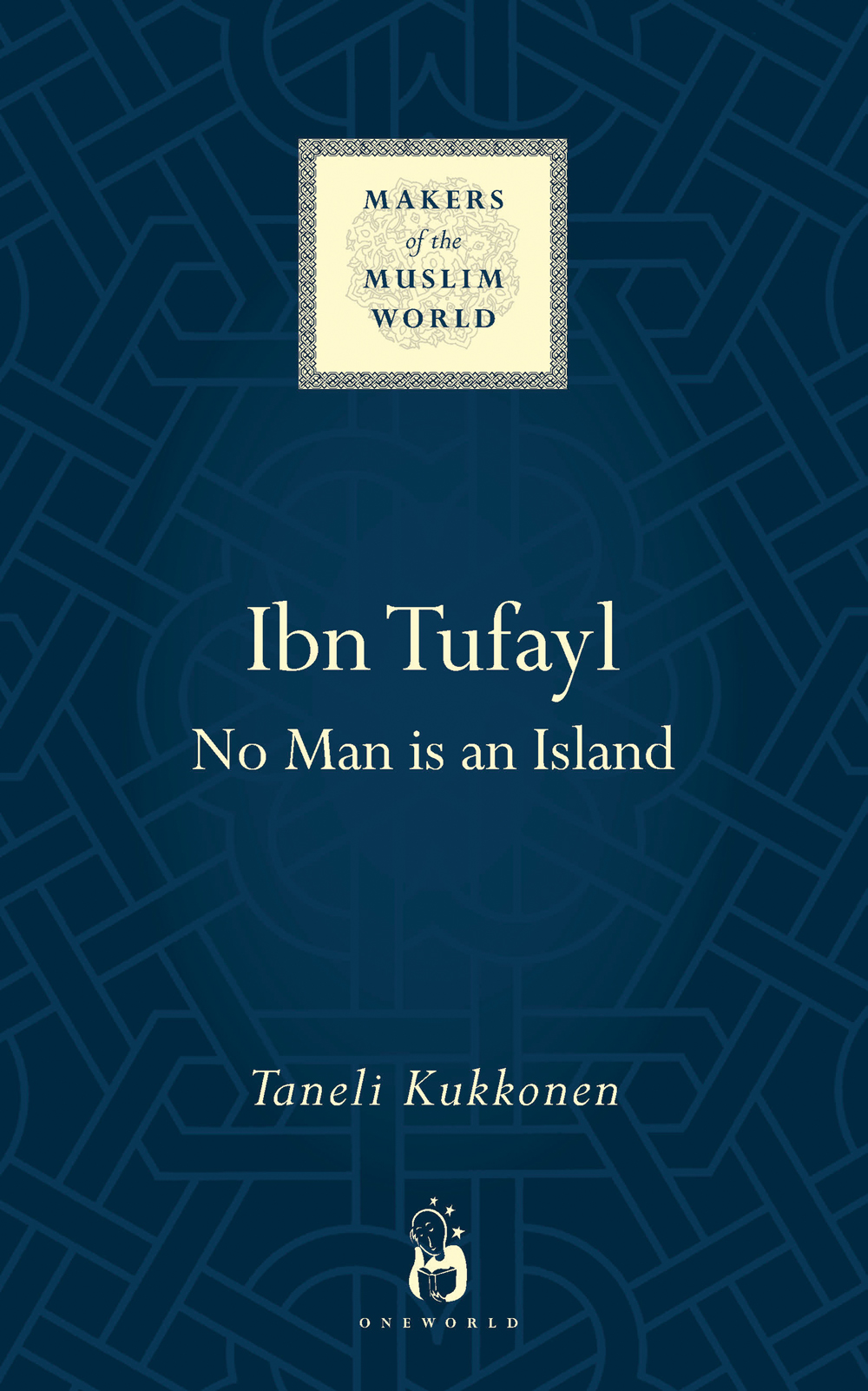
Ibn Tufayl
TITLES IN THE MAKERS OF THE MUSLIM WORLD SERIES
Series Editor: Patricia Crone, Institute for Advanced Study, Princeton
Abd al-Ghani al-Nabulusi , Samer Akkach
Abd al-Malik , Chase F. Robinson
Abd al-Rahman III , Maribel Fierro
Abu Nuwas , Philip Kennedy
Ahmad al-Mansur , Mercedes Garca-Arenal
Ahmad ibn Hanbal , Christopher Melchert
Ahmad Riza Khan Barelwi , Usha Sanyal
Akbar , Andr Wink
Al-Mamun , Michael Cooperson
Al-Mutanabbi , Margaret Larkin
Amir Khusraw , Sunil Sharma
Ashraf Ali Thanawi , Muhammad Qasim Zaman
Chinggis Khan , Michal Biran
El Hajj Beshir Agha , Jane Hathaway
Eljah Muhammad , Herbert Berg
Fazlallah Astarabadi and the Hurufi s , Shazad Bashir
Ghazali , Eric Ormsby
Hasan al-Banna , Gudrun Krmer
Husain Ahmad Madani , Barbara Metcalf
Ibn Arabi ,William C. Chittick
Ibn Fudi , Ahmad Dallal
Ikhwan al-Safa , Godefroid de Callatay
Imam Shafi i , Kecia Ali
Karim Khan Zand , John R. Perry
Mehmed Ali , Khaled Fahmy
Muawiya ibn abi Sufyan , R. Stephen Humphreys
Muhammad Abduh , Mark Sedgwick
Nasser , Joel Gordon
Nazira Zeineddine , miriam cooke
Sadi , Homa Katouzian
Shaykh Mufi d ,Tamima Bayhom-Daou
Usama ibn Munqidh , Paul M. Cobb
For current information and details of other books in the series, please
visit www.oneworld-publications.com
Ibn Tufayl
Living the Life of Reason
Taneli Kukkonen
IBN TUFAYL
A Oneworld Book
Published by Oneworld Publications 2014
This ebook edition first published by Oneworld Publications, 2014
Copyright Taneli Kukkonen 2014
All rights reserved
Copyright under Berne Convention
A CIP record for this title is available
from the British Library
ISBN 9781780745640
eISBN 9781780746173
Typeset by Jayvee, Trivandrum, India
Oneworld Publications
10 Bloomsbury Street,
London WC1B 3SR, England
CONTENTS
I n this book I introduce Ibn Tufayl, a sixth-/twelfth-century Andalusian philosopher of moderate renown. I do so through examining Ibn Tufayls only extant philosophical work, the altogether extraordinary narrative, Hayy Ibn Yaqzan , best translated as Living, Son of Wakeful. The title of the book, which at the same time hands us the name of the books eponymous protagonist, Hayy, was appropriated from the works of the far more famous Muslim philosopher Ibn Sina (the Latin Avicenna, d.428/1037). So were many of its themes, which in any case are treated much more extensively in the works of other philosophers, some of them Ibn Tufayls contemporaries. To this we may add that because Ibn Tufayl lived his life in the far West in Muslim terms, in Andalusia and present-day Morocco, his influence in shaping later Islamic philosophy proved limited. Why, then, dedicate a volume in the Makers of the Muslim World series to him?
One answer is that Ibn Tufayl has had a disproportionate impact on our impression of the Muslim intellectual universe. Hayy was one of the first Islamic philosophical works to be translated into English, first through Latin in 1674 and then directly from the Arabic in 1708. And although the prior medieval Latin reception of Islamic philosophy had already been long and storied, Hayy , with a narrative that details the exploration and eventual conquest of nature and an ensuing spiritual enlightenment, resonated in a fresh and exciting way with an early modern readership. This led to a slew of Hayy translations and imitative works in multiple European languages, among which we may arguably count Daniel Defoes Robinson Crusoe and with somewhat better justification its second-in-line sequel, Serious Reflections During the Life and Surprising Adventures of Robinson Crusoe: With his Vision of the Angelick World , which far fewer people have ever read. Subsequent generations of Western readers have continued to turn to Hayy in order to assess the role of reasoned inquiry in Muslim thought (for better and for worse, as we shall see).
A better reason for devoting attention to Hayy and its author is that the work rewards the effort. No only is Hayy one of the most delightful literary creations of classical Islamic civilization; it is also about the best introduction to Arabic philosophy one could hope for. In accessible and attractive prose, Hayy portrays much of what is most intriguing about this particular intellectual tradition. Even if Ibn Tufayl did not quite shape the future of Islamic culture to the extent that he and perhaps we would have wished, his sole surviving work compellingly conveys some of its perennially fascinating features. In peering at the world through Hayy s lenses, we can learn a great deal about how the universe appeared to a trained twelfth-century Muslim scholar.
Several superlative English translations of Hayy Ibn Yaqzan exist, a rare blessing when it comes to Islamic philosophy. I hope that this book will encourage the reader to pick up one of them and to discover for the first time, or else to re-read and to re-examine, what is a truly remarkable text. At the same time, this book is meant to stand alone rather than be a running commentary (we have those as well). The reader should come away with some sense of Ibn Tufayls achievement and an appreciation of it, as well as an understanding of the circumstances that shaped this most curious work. I have consequently made my own translations from the Arabic text without, however, claiming to have improved upon existing translations.
Throughout this book, I will only engage with existing scholarship, whether good or bad, in a very limited manner. Mostly, I will try to flag up where someone to my knowledge has made some particularly trenchant observation regarding Ibn Tufayls thought or its social context. These individual references are not meant either to endorse or to reject a given scholars overall interpretation of Hayy Ibn Yaqzan , which remains a much misunderstood work.
Many of the most profound misrepresentations of Ibn Tufayls thought have occurred where its interpreters have reached for timeless inspiration and topical import. I will settle for historical verisimilitude, which so I would claim ultimately yields more interesting results anyway. It is a profoundly useful exercise to try to come to grips with the very real historical distance that separates us even from a thinker such as Ibn Tufayl, who in some ways can seem to us a strikingly modern conversation partner. Such a distancing exercise can serve to remind us of perspectives we have lost as well as ones we have since acquired, and in some cases to ponder whether our own preoccupations and suppositions are as self-evidently correct or worthwhile as we would like to think.
This book is lovingly dedicated to my two sons Sulevi and Julian, who have embarked on a journey of discovery all their own.
A ll page numbers in this book are from the 1936 second edition of the Arabic text established by Lon Gauthier. None of the manuscripts bear section headings or show other divides in the text: all such divisions have been imposed by later editors and translators. Here is one possible way of dividing up the text; I discuss my rationale for it in chapter 2.


